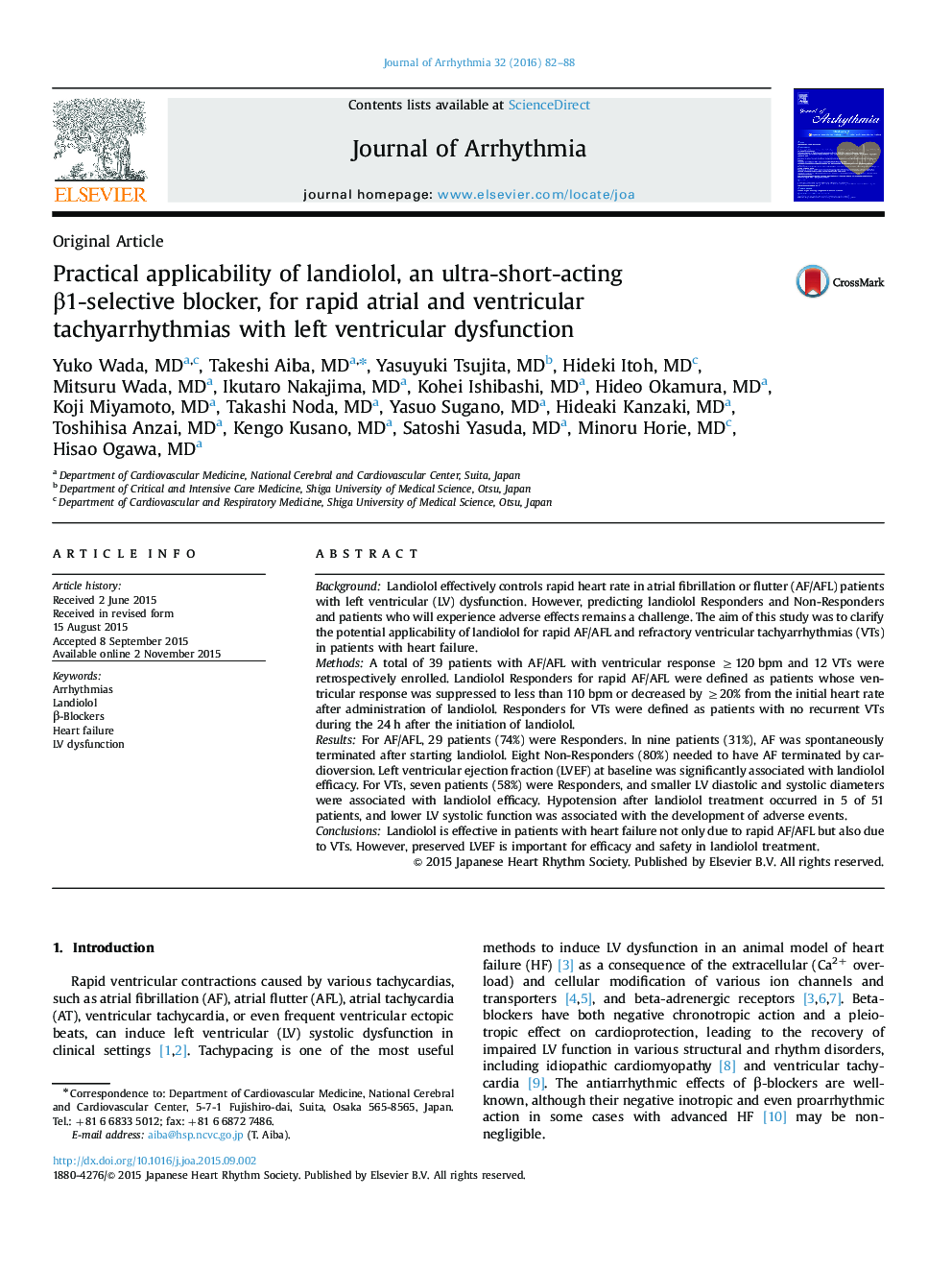| Article ID | Journal | Published Year | Pages | File Type |
|---|---|---|---|---|
| 2957554 | Journal of Arrhythmia | 2016 | 7 Pages |
BackgroundLandiolol effectively controls rapid heart rate in atrial fibrillation or flutter (AF/AFL) patients with left ventricular (LV) dysfunction. However, predicting landiolol Responders and Non-Responders and patients who will experience adverse effects remains a challenge. The aim of this study was to clarify the potential applicability of landiolol for rapid AF/AFL and refractory ventricular tachyarrhythmias (VTs) in patients with heart failure.MethodsA total of 39 patients with AF/AFL with ventricular response ≥120 bpm and 12 VTs were retrospectively enrolled. Landiolol Responders for rapid AF/AFL were defined as patients whose ventricular response was suppressed to less than 110 bpm or decreased by ≥20% from the initial heart rate after administration of landiolol. Responders for VTs were defined as patients with no recurrent VTs during the 24 h after the initiation of landiolol.ResultsFor AF/AFL, 29 patients (74%) were Responders. In nine patients (31%), AF was spontaneously terminated after starting landiolol. Eight Non-Responders (80%) needed to have AF terminated by cardioversion. Left ventricular ejection fraction (LVEF) at baseline was significantly associated with landiolol efficacy. For VTs, seven patients (58%) were Responders, and smaller LV diastolic and systolic diameters were associated with landiolol efficacy. Hypotension after landiolol treatment occurred in 5 of 51 patients, and lower LV systolic function was associated with the development of adverse events.ConclusionsLandiolol is effective in patients with heart failure not only due to rapid AF/AFL but also due to VTs. However, preserved LVEF is important for efficacy and safety in landiolol treatment.
